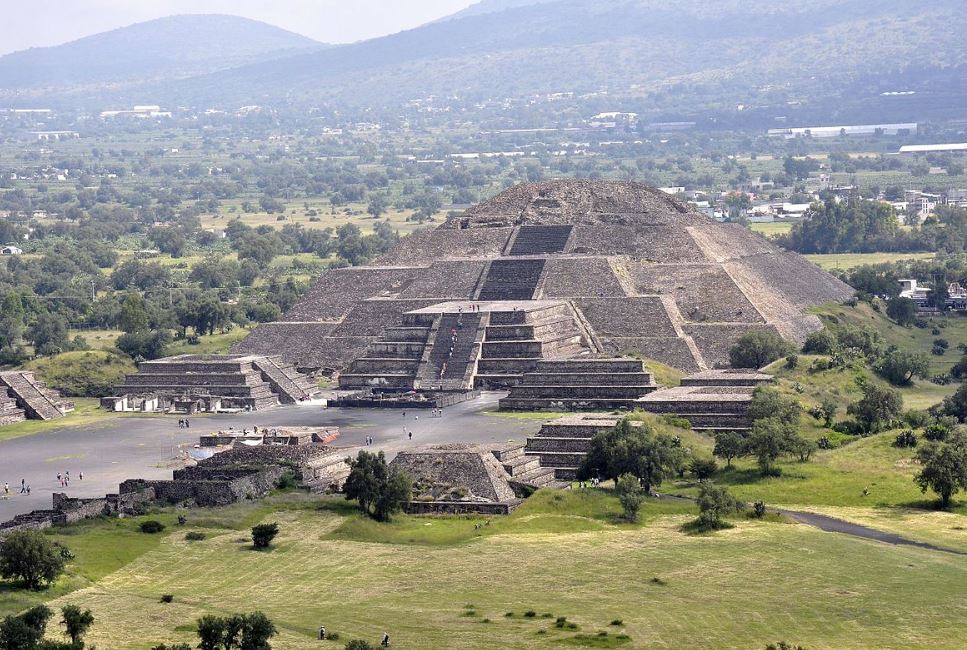Mesoamerican architecture refers to the architectural traditions of the indigenous cultures that developed in the region of Mesoamerica.
It encompasses parts of present-day Mexico, Guatemala, Belize, Honduras, and El Salvador.
This region has been home to several advanced and influential civilizations, including the Olmec, Maya, Aztecs, and others.
Key features of Mesoamerican architecture include:
- Pyramids and Temples: Mesoamerican cultures are well-known for their impressive pyramids and temples. These structures often served religious and ceremonial purposes. Pyramids were constructed with stepped levels, and temples were built on the summits for rituals and ceremonies.

- Plazas and Ball Courts: Many Mesoamerican cities and ceremonial centers featured large plazas surrounded by various structures. Ball courts, where the Mesoamerican ballgame was played, were common and had distinctive architectural features.
- Palaces and Residential Structures: The ruling elite often lived in palaces, which were large, elaborately decorated structures. Residential buildings for common people were generally more modest and made of perishable materials.
- Plaster and Paint: Mesoamerican architecture often involved the use of plaster to cover and decorate buildings. Vibrant colors and intricate designs were applied to surfaces, and murals were common in interior spaces.
- Sacred Cenotes and Water Features: In certain regions, such as the Yucatan Peninsula, natural sinkholes called cenotes were considered sacred and were sometimes incorporated into architectural designs. Water features, such as reservoirs and aqueducts, were also important for Mesoamerican societies.
- Alignment with Celestial Bodies: Some Mesoamerican structures, particularly those built by the Maya, were aligned with celestial events such as solstices and equinoxes. This indicates a sophisticated understanding of astronomy and a connection between architecture and cosmology.
- Stelae and Sculptures: My favorite features of this type of architecture are Carved stone stelae, often depicting rulers and significant events, which were erected in many Mesoamerican cities. Sculptures and reliefs were commonly used to adorn buildings and public spaces.
The architectural styles varied among different Mesoamerican cultures and evolved over time. Notable examples include the pyramids of Teotihuacan (constructed by an unknown civilization), the Maya city of Tikal, and the Aztec capital of Tenochtitlan.
The rich architectural heritage of Mesoamerica reflects the complexity and cultural achievements of these ancient civilizations.
Below are some of the greatest examples of Mesoamerican architecture that you can still admire today!
1. Pyramid of the Sun
The Pyramid of the Sun (Pirámide del Sol) is a large Mesoamerican pyramid located in the ancient city of Teotihuacan, which is situated in the Basin of Mexico, about 30 miles (50 kilometers) northeast of modern-day Mexico City.
Teotihuacan was one of the most significant and influential cities in pre-Columbian Mesoamerica, and its name translates to “the place where the gods were created” in the Nahuatl language.
The Pyramid of the Sun is the third-largest pyramid in the world, following the Great Pyramid of Cholula (also in Mexico) and the Great Pyramid of Giza in Egypt. It stands about 66 meters (216 meters) tall and covers a base of approximately 224 meters (733 feet) on each side.
Like many Mesoamerican pyramids, the Pyramid of the Sun has a stepped structure with a flat summit. It is constructed using an inner core of adobe (sun-dried mud bricks) and an outer layer of large, hewn stones. The outer layer is adorned with a layer of plaster, originally painted in vibrant colors.
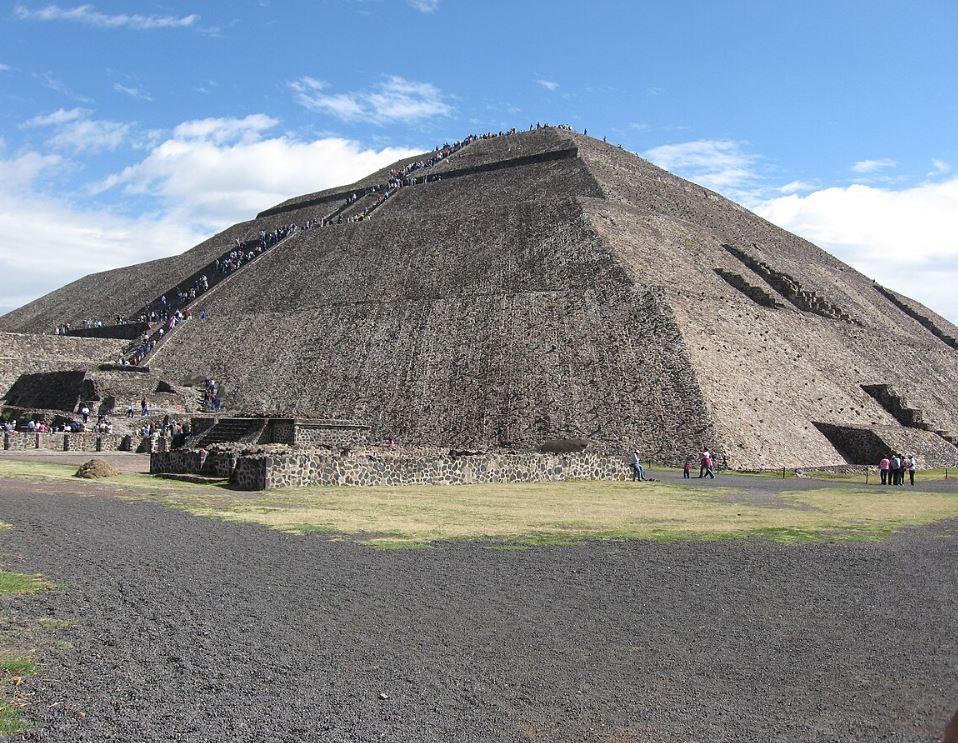
2. El Castillo
El Castillo, also known as the Temple of Kukulcan, is a prominent and iconic Mesoamerican pyramid located at the archaeological site of Chichen Itza in the Yucatan Peninsula of Mexico.
Chichen Itza was a major pre-Columbian city built by the Maya civilization and is now a UNESCO World Heritage Site and one of the New Seven Wonders of the World.
El Castillo is a step pyramid, similar to many other Mesoamerican pyramids. It consists of a series of square terraces with staircases on each side leading to a temple at the top.
The pyramid is approximately 24 meters (79 feet) tall without the temple on top and 30 meters (98 feet) including this sacred structure.
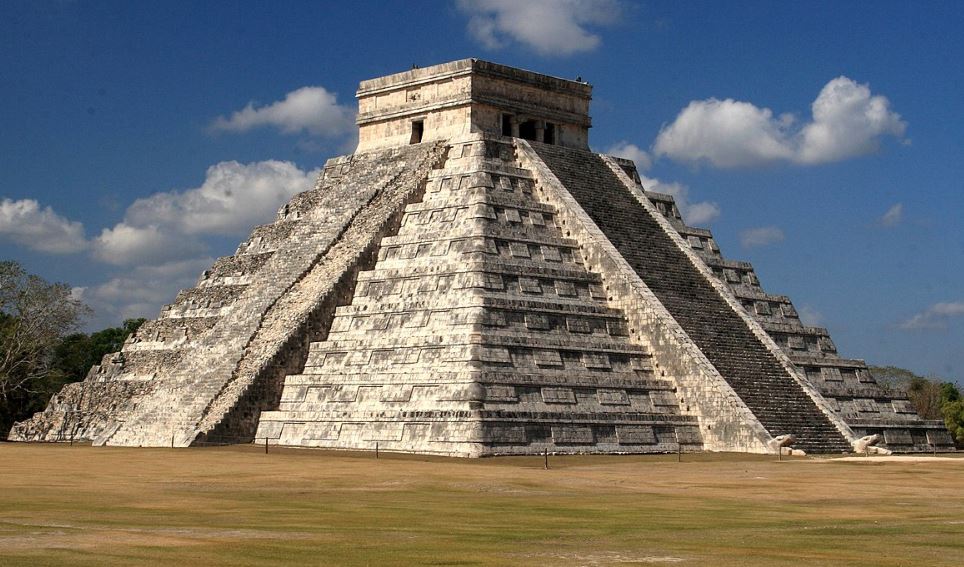
3. Temple of the Feathered Serpent
The Temple of the Feathered Serpent, also known as the Temple of Quetzalcoatl, is a highly significant structure located in the ancient Mesoamerican city of Teotihuacan, near modern-day Mexico City.
The temple is a six-level step pyramid with a rectangular base. It is characterized by its richly decorated façade, featuring intricate stone carvings and sculptures.
It was built between 150 and 200 A.D. and was only discovered in the 1980s. It has been significantly less well-preserved than other Mesoamerican buildings.
The most distinctive feature of the temple is the abundance of feathered serpent imagery. Carved representations of the deity are found on the temple’s exterior, and they include depictions of the deity’s head, plumes, and rattlesnake tail
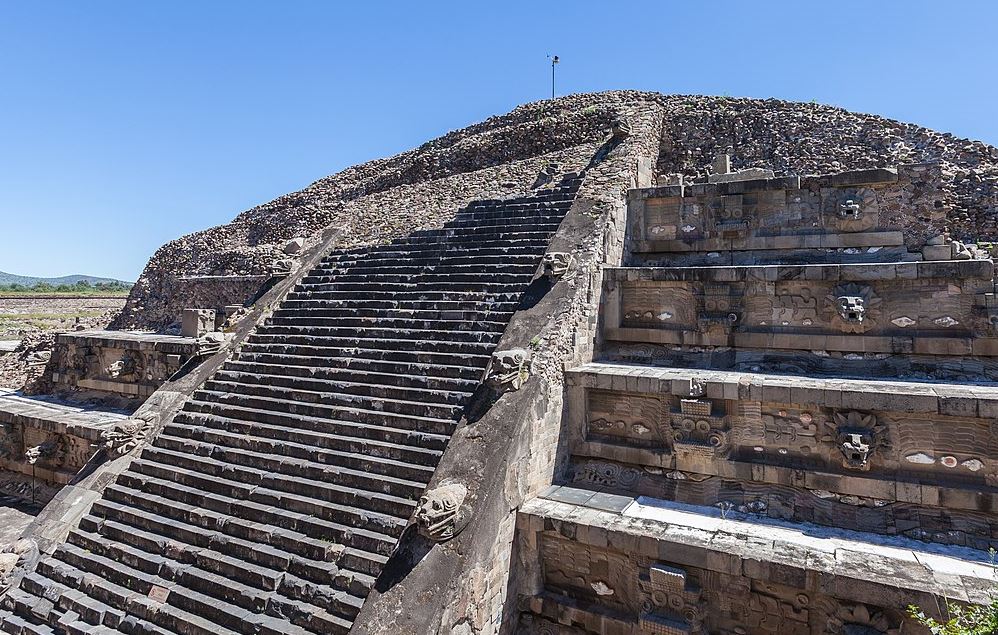
4. El Mirador
El Mirador is a large archaeological site located in the northern Petén region of Guatemala. It represents one of the earliest and most significant Mayan cities, dating back to the Preclassic period (roughly 600 BCE to 250 CE).
The site is renowned for its massive structures, including several large pyramids, and its importance in understanding the development of ancient Maya civilization.
It features several enormous pyramid complexes, including the Danta Complex and the Tigre Complex. The La Danta pyramid is one of the largest pyramids in terms of volume in the world.
El Mirador was abandoned by 300 A.D. and remained largely unknown to the wider world until the mid-20th century. This is when aerial surveys revealed the extent of the ancient city.

5. Pyramid of the Magician
The Pyramid of the Magician or “Pirámide del Adivino” is a notable Mesoamerican pyramid located in the ancient Mayan city of Uxmal, which is situated in the Yucatán Peninsula of Mexico.
Uxmal was a major urban center during the Late Classic period of Mayan civilization, and the Pyramid of the Magician is one of its most iconic structures.
The structure stands out for its unique elliptical shape, which is unusual among Mayan pyramids. Its steep, rounded sides give it a distinctive appearance, different from the more typical stepped pyramids found in other Mayan sites.
The first version was completed in the 6th century and was renovated and expanded several times. Today, the pyramid stands about 40 meters (131 feet) tall.
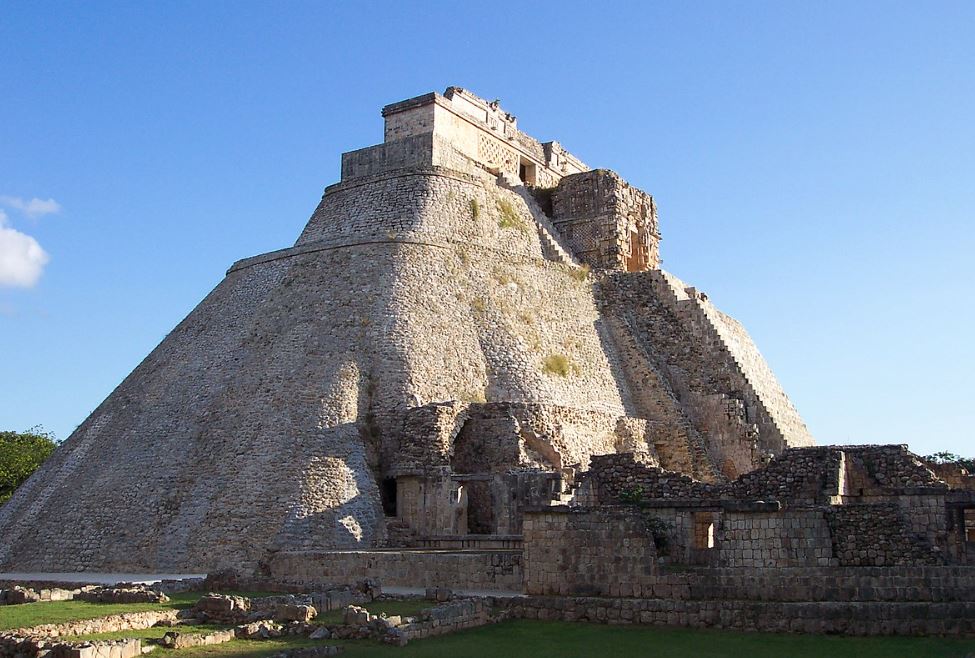
6. Governor’s Palace of Uxmal
The Governor’s Palace of Uxmal or “Palacio del Gobernador” is another significant and well-preserved structure at the ancient Mayan archaeological site of Uxmal.
It’s one of the prime examples of the Puuc architectural style, a sub-category of Mesoamerican architecture which is characterized by the use of intricate stone mosaics on the facades of buildings.
The elaborate decorations on the facade, which are truly a sight to behold, include representations of the rain god Chaac, serpents, masks, and other symbolic elements.
The building stands on top of an enormous platform that faces another site about 5 kilometers (3.1 miles) to the southeast. Both are perfectly aligned with Venus as an evening star.

7. Temple of the Great Jaguar
The Temple of the Great Jaguar is also known as the “Tikal Temple I.” That’s because it’s one of the pain attractions of the Mayan city of Tikal in present-day Guatemala.
This incredibly steep structure is a stepped pyramid with nine levels. It rises to a height of approximately 47 meters (154 feet) above the Grand Plaza without the temple.
Including the funerary structure on top (it was built as a funerary monument for an 8th-century ruler), it rises a whopping 55 meters (180 feet) above the plaza below.
The temple got its name from the carved stone masks depicting the jaguar, a powerful and revered symbol in Mayan culture.

8. Great Ball Court of Chichen Itza
The Great Ball Court of Chichen Itza is a large and impressive ball court located within the archaeological site of Chichen Itza.
The historic sports complex is one of the most significant and well-preserved examples of its kind in Mesoamerica.
The ball court is approximately 96 meters (315 feet) long and 30 meters (98 feet) wide and is surrounded by large walls that feature typically Mesoamerican carvings.
Each end of the playing field is marked by a vertical stone ring set high on the walls. Very much like basketball, the objective of the ballgame was probably to put a rubber ball through these stone rings.

9. The Observatory (El Caracol)
The Observatory, also known as “El Caracol” in Spanish, is another distinctive and well-preserved structure at Chichen Itza.
El Caracol means “The Snake” and this nickname refers to the snake-like staircase inside the most prominent building of the building.
Historians believe this building was constructed for astronomical purposes because of the fact that the doors and windows are aligned in such a way that the movements of stars and planets can be observed.
The structure was constructed on top of the platform and the cylindrical tower is a unique design of Mayan architecture, highlighting its cultural importance.
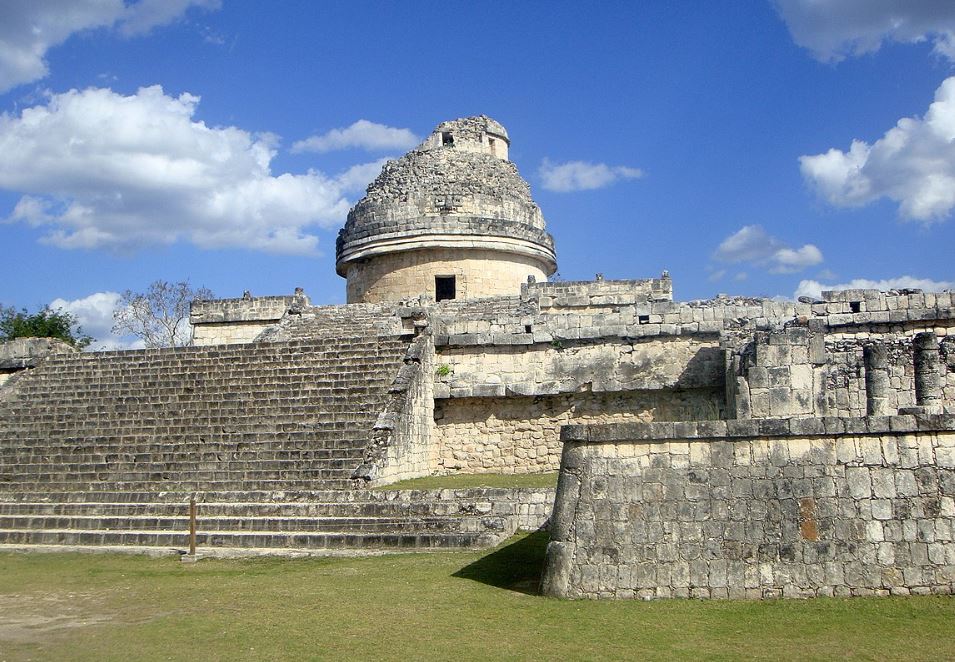
10. Pyramid of the Moon
The Pyramid of the Moon is, just like its counterpart the Pyramid of the Sun, a prominent Mesoamerican pyramid located in the ancient city of Teotihuacan.
It’s the second-largest Mesoamerican pyramid ever constructed and is located just near its slightly larger counterpart (the picture below was taken from the Pyramid of the Sun).
The pyramid stands about 43 meters (141 feet) tall and its base has enormous dimensions of 147 x 130 meters (482 x 426 feet).
What’s remarkable is that the structure resembles the nearby mountain Cerro Gordo. It was constructed between 100 and 450 A.D., at the height of the civilization’s power.
